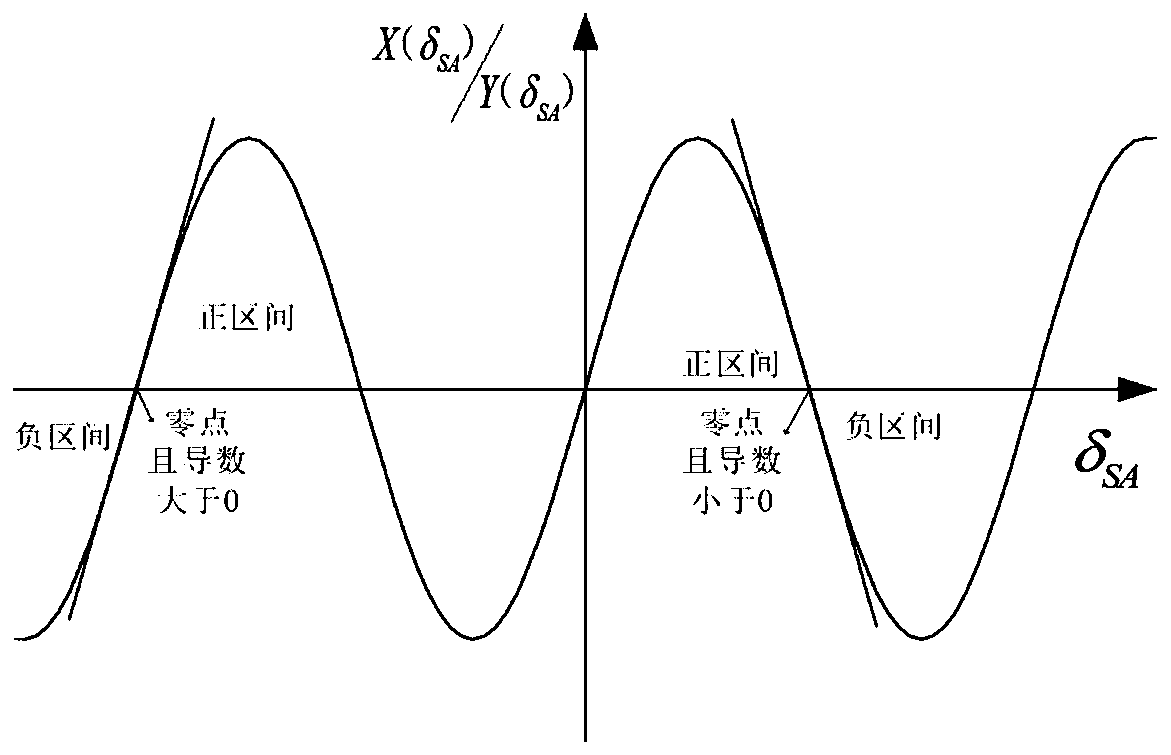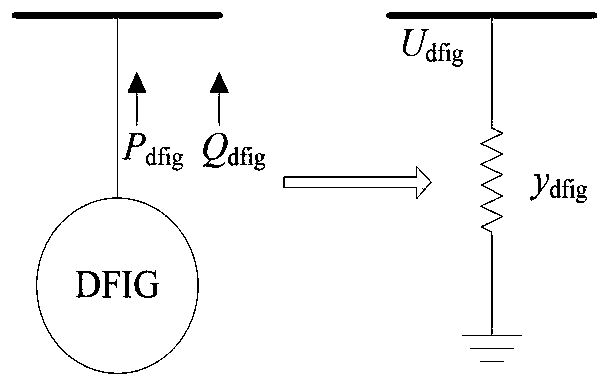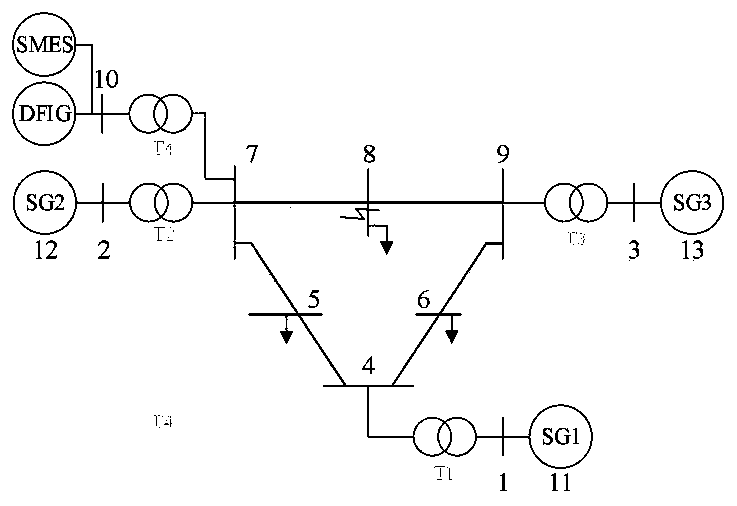Superconducting energy storage control method for improving transient power angle stability of fan-containing system
A technology of transient power angle stabilization and transient power angle, applied in the usage of superconductor elements, flexible AC transmission system, reducing/preventing power oscillation, etc., can solve the impact of lack of transient stability, without considering SMES reactive power Issues such as the relationship between the influence of transient power angle stability on the output characteristic system
- Summary
- Abstract
- Description
- Claims
- Application Information
AI Technical Summary
Problems solved by technology
Method used
Image
Examples
Embodiment
[0122] The topology diagram of a three-machine system with DFIG-SMES is as follows image 3 shown. Among them, the rated capacities of synchronous machines SG1, SG2 and SG3 are 247.5MW, 192MW and 128MW respectively; DFIG and SMES are connected in parallel at node 7, and the rated power of DFIG is 75MW; a three-phase symmetrical fault is set at node 8, and the fault lasts from 0.3s to 0.6s. In this example, SG2 and SG3 belong to the leading group S, and SG1 belongs to the remaining group A. DFIG adopts the rotor crowbar crossing scheme, and the resistance of the crowbar is 0.1 ohm. It will be put into operation when the voltage drop is detected on the stator side, and it will exit when the fault ends. In order to verify the effectiveness of this scheme, the simulation comparison analysis of SMES controlled by this scheme, SMES controlled by power angle increase and decrease, and no SMES was carried out under the same fault.
[0123] Figure 4 What is shown is the increase a...
PUM
 Login to View More
Login to View More Abstract
Description
Claims
Application Information
 Login to View More
Login to View More - R&D
- Intellectual Property
- Life Sciences
- Materials
- Tech Scout
- Unparalleled Data Quality
- Higher Quality Content
- 60% Fewer Hallucinations
Browse by: Latest US Patents, China's latest patents, Technical Efficacy Thesaurus, Application Domain, Technology Topic, Popular Technical Reports.
© 2025 PatSnap. All rights reserved.Legal|Privacy policy|Modern Slavery Act Transparency Statement|Sitemap|About US| Contact US: help@patsnap.com



